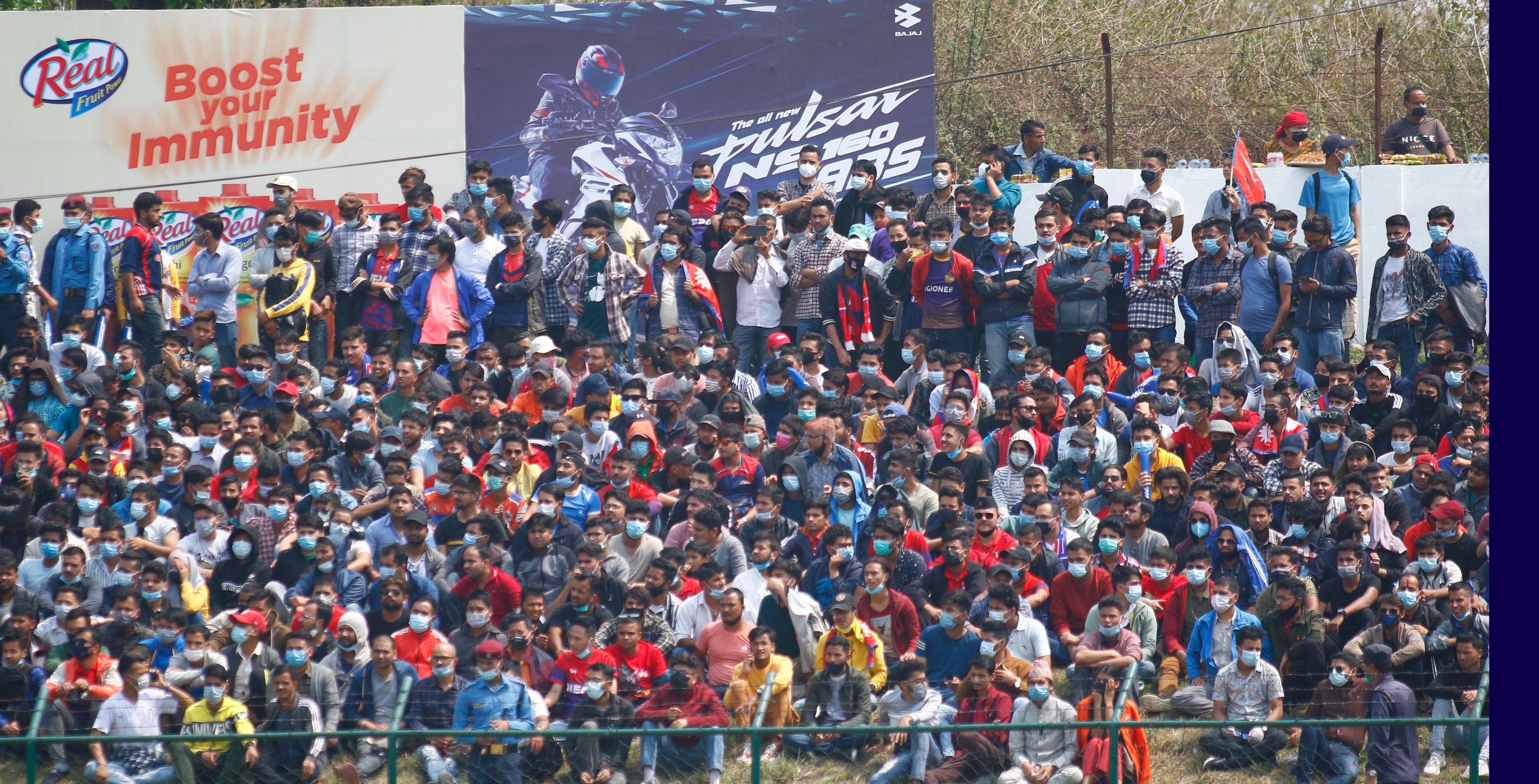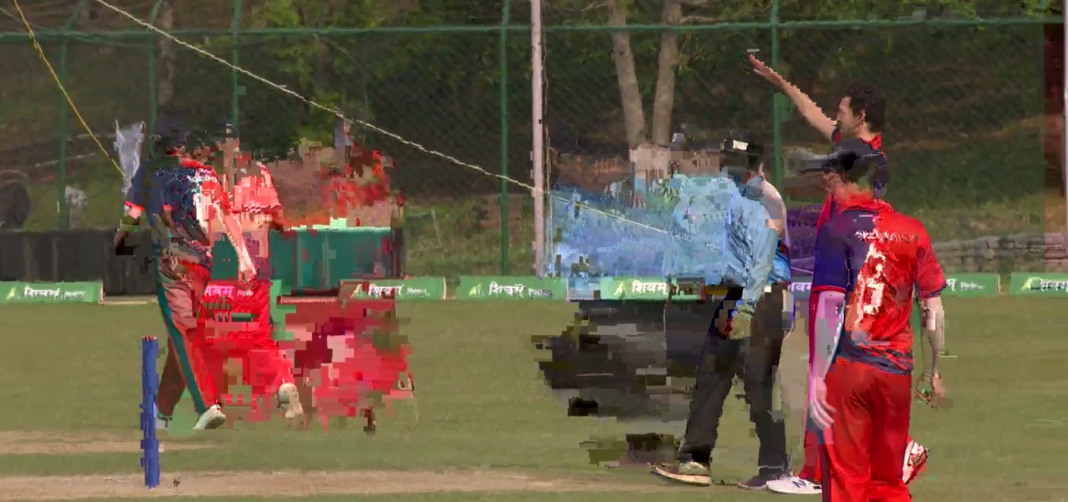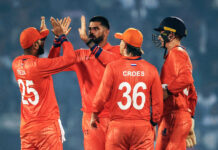Buoyed by a unified bowling performance and the electric new opening partnership of Kushal Bhurtel and Aasif Sheikh, an emphatic Nepali side hit the ground running yesterday in the first match of their home T20I Tri-series, trouncing a young Dutch side by nine wickets in Kathmandu.
While thousands flocked to the TU Ground to see their heroes, and a win under new coach Dav Whatmore, viewers around the globe were less fortunate. As dominant as the performance was on the field, pixelations, dropouts, and other issues during the television coverage defeated everybody, with limited moments of the match considered watchable.

After longer than a year of waiting, viewers were justifiably flat and frustrated, disappointed as production and tech issues ruined the experience. Even when the picture was good enough to at least witness a delivery or two, sound-syncing issues compounded things further. Rights agreement bungles played a part as well, with viewers outside outside the United Kingdom unable to access Freesports, the European holders. Despite last-minute efforts, the KNCB were also unable to secure their broadcast stream, scrambling at the eleventh hour after learning that they would also be geoblocked.
While those promised cricket on the continent weren’t affected financially, several rights holders, expecting an adequate product, will be forced to consider refunding their customers. Broadcasters, like Australian-based Sports Flick, were forced to step in and apologise.
The hard truth in all of this is that if Associate cricket is to be taken seriously, there must be an improvement in the organisation of these events. How can the emerging game be appealing if no one can see the excitement in the first place? Nepal’s opening pair could have been two Don Bradmans reincarnated, and viewers would have been none the wiser. The game cannot grow if no one can see the end product: two squads of outstanding cricketers each proudly representing their respective countries at the elite level.
Emerging Cricket understands that preparation for the tri-series was done again at the last minute. Rigging up cameras and equipment around the ground in a rush is an insult to the dozens of people brought in to help the coverage, and the final product ends up as a shell of what it should be. When production plans and graphics are all thrown in so late, the commentary team (also assembled so close to the first ball) struggle to go into a game with any confidence.
“Everybody wants to talk about cricket in Nepal, but no one wants to talk about Nepali cricket” – it’s a saying heard and tweeted across the country, though for all its ambition and popularity, the game is hampered by avoidable errors and a lack of proper preparation. As the country craves the limelight, it seems there are shortcuts being taken on the pathway to the top. For a country almost built on hard work and ageless endeavour, the issues exemplify the teething issues of the country. To try and profit from selling rights, one must ensure the product is good enough to sell.

Nepal, like many other Associate countries at the same level, are moving into a new space, attempting to commodify their game and leveraging the increased popularity and fanfare. The problems experienced yesterday could be seen as a microcosm for Nepal cricket – keen to see a glitzy final product – though not prepared to work on the finer details to ensure a polished product results. After the same issues affected Cricket World Cup League 2 matches last year, it’s clear to see lessons have not been learnt, with the ad hoc measures and the taping over cracks no longer sufficient. Knowing how many people would be tuning in, and the bandwidth needed, anything less sells the country, its people and Associate cricket short. Maybe the mantra of proper planning and preparation preventing poor performance is the way forward.
No one would waste the time typing or the vocal chords screaming if this was a lost cause. There is so much potential, but it will remain potential if corners are cut on the road to the promised land.
You’re reading Emerging Cricket — brought to you by a passionate group of volunteers with a vision for cricket to be a truly global sport, and a mission to inspire passion to grow the game.
Be sure to check out our homepage for all the latest news, please subscribe for regular updates, and follow EC on Twitter, Facebook, LinkedIn and YouTube.
Don’t know where to start? Check out our features list, country profiles, and subscribe to our podcast.
Support us from US$2 a month — and get exclusive benefits, by becoming an EC Patron.







